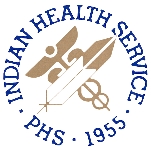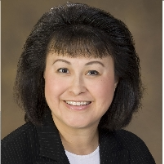The 2000 census indicated that more than 4 million Americans were of American Indian and Alaska Native heritage. American Indians and Alaska Natives die at higher rates than other Americans from tuberculosis (750% higher), alcoholism (550% higher), diabetes (190% higher), unintentional injuries (150% higher), homicide (100% higher) and suicide (70% higher). (Rates adjusted for misreporting of Indian race on state death certificates; 2002-2004 rates.) As a branch of the U.S. Department of Health and Human Services, the purpose of the IHS is to offset this disparity by providing health programs for Native Americans. The IHS has 12 Area Offices located throughout the continental United States and in Alaska.
The provision of health services to members of federally-recognized tribes grew out of the relationship between the federal government and Indian tribes that were established in 1787 from Article I, Section 8 of the Constitution. This has been given form and substance by numerous treaties, laws, Supreme Court decisions, and Executive Orders. In 1921, the Snyder Act (42 Stat.208) (PDF), was passed by Congress to provide continuing authority for Federal Indian programs. The Snyder Act is the basic authorization for Federal health services to U.S. Indian Tribes. It identified the “relief of distress and conservation of health of Indians” as one of the Federal functions. In 1954, all functions of the Secretary of the Interior relating to the conservation of the health of Indians were transferred to the Surgeon General of the United States Public Health Service. On July 1, 1955, about 2,500 health program personnel of the Bureau of Indian Affairs, along with 48 hospitals, 18 health centers, 62 stations, 13 school infirmaries, and other locations, came under the jurisdiction of the newly created Indian Health Service. One of the initial orders of business for the first Director of the IHS was to describe the health status of American Indians and Alaska Natives. A report entitled “Health Services for American Indians” was prepared by the Surgeon General of the USPHS and submitted to Congress on February 11, 1957. This report became known as the “1957 IHS Gold Book.” The Gold Book is recognized as a founding historical marker outlining the challenges that faced the newly formed IHS.
The IHS is meant to provide preventive, curative, and community health care to approximately 1.9 million of the nation’s 3.3 million American Indians and Alaska Natives. The IHS currently provides health services to approximately 1.5 million of these American Indians and Alaska Natives who belong to more than 557 federally recognized tribes in 35 states. IHS services are administered through a system of 12 Area offices and 163 IHS and tribally managed service units.
Nationwide Programs and Initiatives
The enacted budget authority for the Indian Health Service (IHS), for fiscal year (FY) 2008 was $3.35 billion. This is a $166 million, or approximately 5.2 percent, increase over the FY 2007 enacted budget level.
Partnership with the Centers for Medicare and Medicaid Services
Abortion funding Ban on American Indian Clinics
Genocide of Family Planning (by Beth A. Spencer, Inside Chico State)
Charles W. Grim
The former director of IHS, Charles W. Grim, a member of the Cherokee Nation, graduated from the University of Oklahoma College of Dentistry in 1983. He was appointed Director of the Division of Oral Health for the Albuquerque Area of the IHS in 1992 and he eventually became the Interim Director in August 2002, appointed by President George W. Bush, and received confirmation as Acting Director in July 2003. After his four years of commitment at IHS, he withdrew from nomination for a second term in September 2007. Grim, told Indian Country Today that it was too difficult to commute between Oklahoma, where his family resides, and IHS headquarters in Washington, D.C.
- Table of Contents
- Overview
- History
- What it Does
- Where Does the Money Go
- Controversies
- Suggested Reforms
- Comments
- Leave a comment


Mary L. Smith, an attorney and enrolled member of the Cherokee Nation, took over the Indian Health Service in March 2016.
Smith was born in Chicago and attended Loyola University there, earning a B.S. in mathematics and computer science in 1984. She initially worked with computers, as a systems programmer for drug chain Walgreens and as a senior systems engineer at Northern Trust Bank, both in Chicago.
In 1988, she returned to Loyola to attend law school. After her first year, she transferred to the University of Chicago law school, where she earned her J.D. in 1991. Smith then clerked for Judge R. Lanier Anderson III of the Eleventh Circuit Court of Appeals.
After finishing her clerkship, Smith took a job at the Chicago law firm of Ross & Hardies. In 1994, she joined the Justice Department as a trial attorney in the civil division. She took time off in 1996 to work in President Bill Clinton’s re-election campaign. In the spring of 1997, she was named associate counsel to the president, and associate director of policy planning for the administration’s Domestic Policy Council.
When Clinton left office in 2001, Smith took a job at the firm of Skadden, Arps, Slate, Meagher & Flom. In 2005, she joined Tyco International and managed that company’s response to a huge suit filed by shareholders after its former CEO, L. Dennis Kozlowski, and other company officials were charged with looting the company. Tyco eventually settled the suit for $3 billion. At the time, it was the largest recorded settlement of a class-action suit against a single company.
Smith left Tyco in 2007 to work on Hillary Clinton’s presidential campaign. When Clinton dropped out of the race, Smith briefly went to work for the firm of Schoeman, Updike & Kaufman. After Barack Obama won the presidency, Smith was named to the Department of Justice transition team. In 2009, Obama nominated her to be Assistant Attorney General in charge of tax issues. However, Senate Republicans blocked her appointment, saying she was unqualified. Smith worked as a counselor in the Justice Department’s civil division until 2011, when her nomination was turned down.
Smith left the administration and became general counsel for the Illinois Department of Insurance, where she worked on tax aspects of implementing the Affordable Care Act in that state.
Smith returned to the Obama administration in 2015, this time to the Indian Health Service, and took over the agency the following year upon the departure of Yvette Roubideaux.
-Steve Straehley
To Learn More:
Official Biography (pdf)

A physician and professor who has dedicated her career to combating diabetes, Yvette Roudideaux is the first Native American woman to head the Indian Health Service since it was founded in 1955. She was sworn in May 12, 2009.
- Latest News
- D.C. Public Schools will Teach all Second-Graders to Ride a Bike
- New Rule in Germany Limits Sales of Sex-Themed E-Books to 10pm to 6am
- What Happened to the 6-Year-Old Tibetan Boy the Chinese Government Kidnapped 20 Years Ago?
- U.S. Ambassador to Turkey Photoshops his Hair Color to Mock Turkish Mayor
- Mystery Artist Calls Attention to Unfixed Potholes by Drawing Penises around Them
The 2000 census indicated that more than 4 million Americans were of American Indian and Alaska Native heritage. American Indians and Alaska Natives die at higher rates than other Americans from tuberculosis (750% higher), alcoholism (550% higher), diabetes (190% higher), unintentional injuries (150% higher), homicide (100% higher) and suicide (70% higher). (Rates adjusted for misreporting of Indian race on state death certificates; 2002-2004 rates.) As a branch of the U.S. Department of Health and Human Services, the purpose of the IHS is to offset this disparity by providing health programs for Native Americans. The IHS has 12 Area Offices located throughout the continental United States and in Alaska.
The provision of health services to members of federally-recognized tribes grew out of the relationship between the federal government and Indian tribes that were established in 1787 from Article I, Section 8 of the Constitution. This has been given form and substance by numerous treaties, laws, Supreme Court decisions, and Executive Orders. In 1921, the Snyder Act (42 Stat.208) (PDF), was passed by Congress to provide continuing authority for Federal Indian programs. The Snyder Act is the basic authorization for Federal health services to U.S. Indian Tribes. It identified the “relief of distress and conservation of health of Indians” as one of the Federal functions. In 1954, all functions of the Secretary of the Interior relating to the conservation of the health of Indians were transferred to the Surgeon General of the United States Public Health Service. On July 1, 1955, about 2,500 health program personnel of the Bureau of Indian Affairs, along with 48 hospitals, 18 health centers, 62 stations, 13 school infirmaries, and other locations, came under the jurisdiction of the newly created Indian Health Service. One of the initial orders of business for the first Director of the IHS was to describe the health status of American Indians and Alaska Natives. A report entitled “Health Services for American Indians” was prepared by the Surgeon General of the USPHS and submitted to Congress on February 11, 1957. This report became known as the “1957 IHS Gold Book.” The Gold Book is recognized as a founding historical marker outlining the challenges that faced the newly formed IHS.
The IHS is meant to provide preventive, curative, and community health care to approximately 1.9 million of the nation’s 3.3 million American Indians and Alaska Natives. The IHS currently provides health services to approximately 1.5 million of these American Indians and Alaska Natives who belong to more than 557 federally recognized tribes in 35 states. IHS services are administered through a system of 12 Area offices and 163 IHS and tribally managed service units.
Nationwide Programs and Initiatives
The enacted budget authority for the Indian Health Service (IHS), for fiscal year (FY) 2008 was $3.35 billion. This is a $166 million, or approximately 5.2 percent, increase over the FY 2007 enacted budget level.
Partnership with the Centers for Medicare and Medicaid Services
Abortion funding Ban on American Indian Clinics
Genocide of Family Planning (by Beth A. Spencer, Inside Chico State)
Charles W. Grim
The former director of IHS, Charles W. Grim, a member of the Cherokee Nation, graduated from the University of Oklahoma College of Dentistry in 1983. He was appointed Director of the Division of Oral Health for the Albuquerque Area of the IHS in 1992 and he eventually became the Interim Director in August 2002, appointed by President George W. Bush, and received confirmation as Acting Director in July 2003. After his four years of commitment at IHS, he withdrew from nomination for a second term in September 2007. Grim, told Indian Country Today that it was too difficult to commute between Oklahoma, where his family resides, and IHS headquarters in Washington, D.C.
Comments


Mary L. Smith, an attorney and enrolled member of the Cherokee Nation, took over the Indian Health Service in March 2016.
Smith was born in Chicago and attended Loyola University there, earning a B.S. in mathematics and computer science in 1984. She initially worked with computers, as a systems programmer for drug chain Walgreens and as a senior systems engineer at Northern Trust Bank, both in Chicago.
In 1988, she returned to Loyola to attend law school. After her first year, she transferred to the University of Chicago law school, where she earned her J.D. in 1991. Smith then clerked for Judge R. Lanier Anderson III of the Eleventh Circuit Court of Appeals.
After finishing her clerkship, Smith took a job at the Chicago law firm of Ross & Hardies. In 1994, she joined the Justice Department as a trial attorney in the civil division. She took time off in 1996 to work in President Bill Clinton’s re-election campaign. In the spring of 1997, she was named associate counsel to the president, and associate director of policy planning for the administration’s Domestic Policy Council.
When Clinton left office in 2001, Smith took a job at the firm of Skadden, Arps, Slate, Meagher & Flom. In 2005, she joined Tyco International and managed that company’s response to a huge suit filed by shareholders after its former CEO, L. Dennis Kozlowski, and other company officials were charged with looting the company. Tyco eventually settled the suit for $3 billion. At the time, it was the largest recorded settlement of a class-action suit against a single company.
Smith left Tyco in 2007 to work on Hillary Clinton’s presidential campaign. When Clinton dropped out of the race, Smith briefly went to work for the firm of Schoeman, Updike & Kaufman. After Barack Obama won the presidency, Smith was named to the Department of Justice transition team. In 2009, Obama nominated her to be Assistant Attorney General in charge of tax issues. However, Senate Republicans blocked her appointment, saying she was unqualified. Smith worked as a counselor in the Justice Department’s civil division until 2011, when her nomination was turned down.
Smith left the administration and became general counsel for the Illinois Department of Insurance, where she worked on tax aspects of implementing the Affordable Care Act in that state.
Smith returned to the Obama administration in 2015, this time to the Indian Health Service, and took over the agency the following year upon the departure of Yvette Roubideaux.
-Steve Straehley
To Learn More:
Official Biography (pdf)

A physician and professor who has dedicated her career to combating diabetes, Yvette Roudideaux is the first Native American woman to head the Indian Health Service since it was founded in 1955. She was sworn in May 12, 2009.
- Latest News
- D.C. Public Schools will Teach all Second-Graders to Ride a Bike
- New Rule in Germany Limits Sales of Sex-Themed E-Books to 10pm to 6am
- What Happened to the 6-Year-Old Tibetan Boy the Chinese Government Kidnapped 20 Years Ago?
- U.S. Ambassador to Turkey Photoshops his Hair Color to Mock Turkish Mayor
- Mystery Artist Calls Attention to Unfixed Potholes by Drawing Penises around Them





Comments